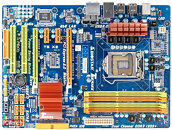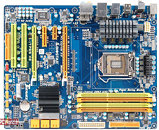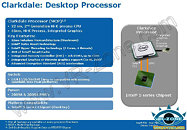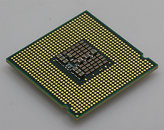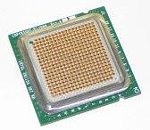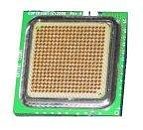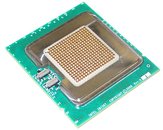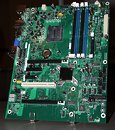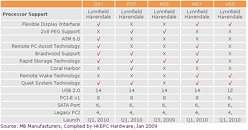
Biostar's Intel P55 Lineup Detailed
With Intel's LGA-1156 Ibex-Peak platform weeks away from launch, like most major motherboard vendors, Biostar its compatible motherboard lineup ready, top to bottom. The company has at least three motherboards based on the Intel P55 chipset for the first wave, two in its mid-range T-Series, and one high-end T-Power series. The lineup starts with the T-Series T5 XE, continues with T-Series TP55 XE, and ends with the T-Power I55.
The T-Series T5 XE is a low-frills model that relies on the chipset's stock feature-set for the most part. The CPU is powered by a 4+2 phase power circuit, and the memory by a 2-phase circuit. The expansion slots are standard issue, two PCI-E 2.0 x16 slots that are electrically x8 when both are populated with video cards, two each of PCI-E x1 and legacy PCI, six SATA II ports routed to the chipset, an additional controller driving the IDE, one gigabit Ethernet connection, and 8-channel audio. Simple anodized aluminum heatsinks cool the chipset and a portion of the board's VRM area.
The T-Series T5 XE is a low-frills model that relies on the chipset's stock feature-set for the most part. The CPU is powered by a 4+2 phase power circuit, and the memory by a 2-phase circuit. The expansion slots are standard issue, two PCI-E 2.0 x16 slots that are electrically x8 when both are populated with video cards, two each of PCI-E x1 and legacy PCI, six SATA II ports routed to the chipset, an additional controller driving the IDE, one gigabit Ethernet connection, and 8-channel audio. Simple anodized aluminum heatsinks cool the chipset and a portion of the board's VRM area.
